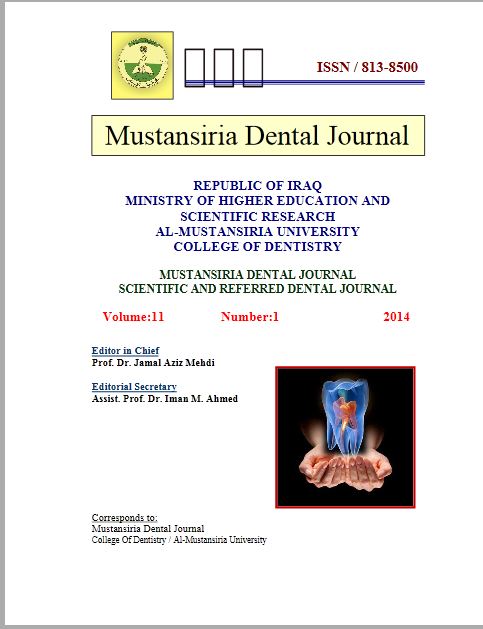Prevalence of Radix Entomolaris &Radix paramolaris in the extraction of permanent mandibular first and second molar (5-year clinical study)
DOI:
https://doi.org/10.32828/mdj.v11i1.223Keywords:
Keywords: Anatomical variations, Mandibular first molar, radix entomolaris, Three-rooted molarAbstract
Aim: To determine the Prevalence of Radix Entomolaris & Radix paramolaris in the
lower molar teeth during their extraction.
Introduction: mandibular molar is the earliest permanent posterior tooth to erupt,
responsible for development of occlusion and important physiologic functions like
chewing. Permanent molars was the most common teeth needing extraction in
Iraq. Thus, it is of utmost importance that the clinician be familiar with variations
in the root and root can Mandibular molars
Materials and Methods: A clinical Study for 5- years done 0n 842 extracted teeth. In
the Department of oral and maxilla-facial surgery clinic, college of dentistry,
university of Tikrit.
Results: Radix Entomolaris Radix& paramolaris was found in38 of the extracted
teeth with prevalence of 4.5 % with95 % confidence ranging between (3.1-5.9
%).1st molar consistuited about 3 / 4 (76.7 %) of the study sampling .On over all
the prevalence rate of this root variant was slightly higher among females. Also
the position of this variation shows that the right side significantly higher.
Conclusion: The high frequency of an extra root in mandibular molars makes it
essential for dentist to be familiar with this anatomical variation. . Further
extensive research is warranted to detect the incidence of this anatomical variation
in the complete Iraqi population

Downloads
Published
Issue
Section
License
The Journal of Mustansiria Dental Journal is an open-access journal that all contents are free of charge. Articles of this journal are licensed under the terms of the Creative Commons Attribution International Public License CC-BY 4.0 (https://creativecommons.org/licenses/by/4.0/legalcode) that licensees are unrestrictly allowed to search, download, share, distribute, print, or link to the full texts of the articles, crawl them for indexing and reproduce any medium of the articles provided that they give the author(s) proper credits (citation). The journal allows the author(s) to retain the copyright of their published article.
Creative Commons-Attribution (BY)








